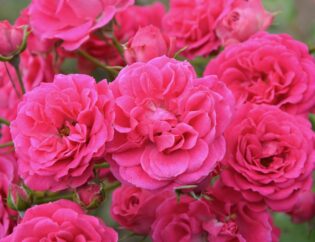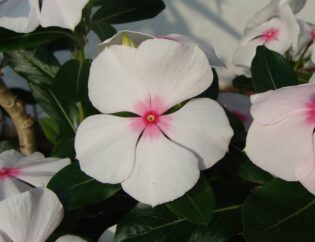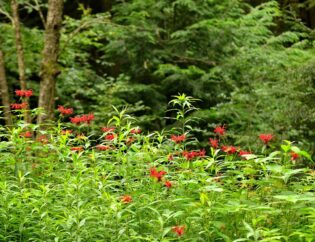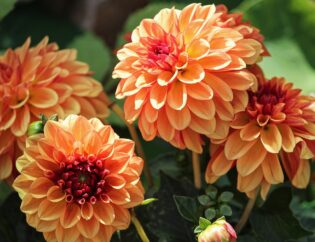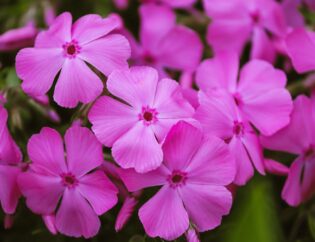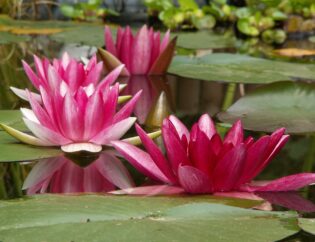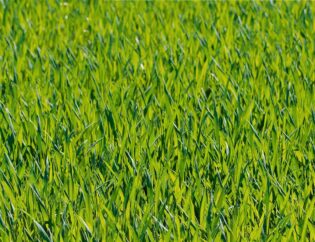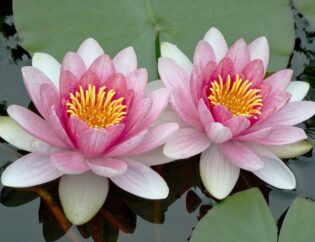
The summer entertaining season is getting underway, and homeowners are looking for ideas to refresh their landscaping. Adding either natural or synthetic landscape timbers adds a chic, yet rustic look.
Curious about how to choose the right timbers? Check out the differences between natural and synthetic landscape timbers here!
Cedar Landscape Timbers
Natural wood is beloved for its beauty and the aesthetic it adds to a yard. However, many types of wood are prone to warping and rotting.
Homeowners often choose cedar landscape timbers because they are rot resistant and durable. The rich color will fade to gray or can be stained in a variety of colors to match the landscaping aesthetic.
Redwood Landscape Timbers
Redwood timbers are also rot resistant and offer rustic vibes with a distinctive, beautiful red color. It will eventually fade to gray-brown unless resealed every couple of years. While some find this a pain, those who love the rich, red hue won’t mind the extra work.
Because of its beauty, redwood is popular for decks and framing outdoor structures, not just as retaining walls for flowerbeds.
Cypress Landscape Timbers
Cypress is also naturally rot-resistant and is especially popular here in southeastern cities like Atlanta. The trees are native to this region of the United States, and the harvested wood is resistant to the elements.
Naturally, cypress is a lighter color than cedar and there is an obvious grain pattern that is perfect for rustic constructions. Without treatment, cypress will eventually fade to a pale gray color.
Cypress, cedar, and redwood timbers are also biodegradable. At the end of their useful life, the boards are removable and can be mulched. The resulting mulch is excellent as a groundcover, to reduce weeds, and to maintain soil moisture.
Pressure-Treated Landscape Timbers
Pressure-treated landscape timbers somewhat bridge the gap between natural and synthetic landscape timbers.
They are made from real wood that has been soaked under pressure with a chemical preservative. This helps prevent the wood from rotting but isn’t necessarily healthy. These timbers should not be used near food gardens as the chemicals can leach into the soil and eventually into the food.
These timbers have a strange greenish color that eventually fades to gray. They must be handled with heavy-duty gloves as splinters are harmful to human health, and respiratory protection must be worn as dust from sawing is also harmful.
Plastic Landscape Timbers
In recent years, plastic has become a popular choice for synthetic landscape timbers. There is a wide variety of shapes, sizes, and colors to choose from, making them a versatile choice.
They also won’t rot like real wood nor leach chemicals into the ground.
Unfortunately, they aren’t as strong as wood and may swell or warp in the sun. However, they can be a handy material for vegetable gardens, sandboxes, and other applications where leaching chemicals are not an option.
Composite Landscape Timbers
For those who love the look of wood, but don’t love the maintenance or the fact that they rot so quickly, composite landscape timbers are a great choice. These timbers come in a variety of colors and styles, but most look like wood.
However, unlike wood, composite landscape timbers don’t rot, aren’t palatable to insects, don’t decay, and don’t need to be resealed every few years. Pretty much the only maintenance required is to rinse them off with a hose on occasion.
Landscape Timber Retaining Walls
Landscape timbers are an excellent choice to build retaining walls for terracing a sloped yard. They are strong, add a rustic flair to the landscaping, and create usable space in otherwise too-steep yards.
Since there will be dirt and moisture against the timbers, rot resistance is key. Pressure-treated landscape timbers will not last as long as block and stone retaining walls, but are an alternative.
Synthetic landscape timbers don’t rot and come in a wide variety of colors and styles to easily match any aesthetic. However, be sure to check the specifications of your chosen product. Not all of them are strong enough for retaining wall use.
Raised Garden Beds
Landscape timbers are perfect for raised garden beds. Synthetic ones will last for many seasons and, unlike pressure-treated lumber, you don’t have to worry about chemicals leaching into the soil around your edible plants.
Natural timbers can work as well but will not last as long without treatment. Redwood and cedar lumber is perfect for this purpose as it ages well and is resistant to the elements. Further, an application of (all-natural) boiled linseed oil increases the lifespan of the project.
Decks
Natural landscape timbers are a great choice for decks and other structures. Since they are typically raised off the ground they will not rot as quickly, though sealing them is still a good choice.
The beauty of these timbers really shines when used in decks. Plus, they can be stained in a wide variety of colors complement the home’s exterior paint.
Vertical Gardens
Vertical gardens make use of vertical space to grow plants rather than horizontal. Thus, a vertical garden needs a structure to lift the plants off the ground.
Build a fence or structure from landscape timbers. Then, it’s simple to mount a few containers and start growing a vertical garden.
Edging
Since they are long, both natural and synthetic landscape timbers are fantastic for edging a path or the edge of the lawn. The timbers give the area a crisp edge and add a sleek look to any yard.
Do I Need to Treat My Outdoor Wood Timbers?
The project will last much longer if it is protected against water (and often sunlight) by a treatment. UV damage from the sun and water damage from the elements absolutely take a toll.
Pressure-treated timbers will last much longer without requiring much maintenance or showing significant signs of rot. Natural wood, however, doesn’t fare so well.
Unfortunately, the chemicals used to preserve the wood are not good for humans or animals. Treated timbers should never be used around food gardens and should be avoided where children or pets will be playing.
Fortunately, sealing natural wood for exterior use is a DIY friendly task. Just be sure to follow the manufacturer’s instructions for safety and quality. There are many options for wood sealants.
How Long Do Timbers Last?
Depending on the type of wood, untreated timbers tend to last about 3 – 5 years. Treated wood lasts at least 7 years and some types can last for 20-40 years!
Synthetic landscape timbers can still be going strong 25 years later.
What Are Landscape Timber Spikes?
Landscape timber spikes look like giant nails and help ensure that landscape timbers stay where they should. Some homeowners partially bury their landscape timbers to keep them in place. This can work — as long as the yard doesn’t flood and the timbers don’t slide out of place.
However, timber spikes add security and ensure the hard work of installation will last.
Still Unsure Which Timbers Are Right for Your Project?
Our landscaping professionals at Atlanta Turf & Tree have 35 years of combined experience turning Atlanta-area yards into works of living, lasting art. Contact our landscaping services experts to get going on your next project!
